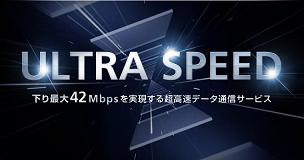![]()

Japan’s largest mobile operator NTT DoCoMo announced at their seasonal press conference that it would launch an LTE (long-term evolution) service called Xi[J] (pronounced as “crossy”) on Christmas eve of this year in Japan’s highly populated areas of Tokyo, Osaka and Nagoya. LTE is collectively known as 3.9G mobile technology standard that allows you to gain an Internet access at much faster speed. NTT DoCoMo’s LTE service enables 37.5Mbps (downlink) in the areas and 75Mbps inside selected buildings, which is 5 to 10 times faster than HSDPA, the mobile broadband technology that is mostly used in this country at this time.

![]()
Meanwhile, Emobile[J], a mobile broadband service provider comparatively focusing on serving high-speed data transmission needs, had been planning to launch 42Mbps (downlink) service this month, which is twice faster than their current line-ups, but it was rescheduled to next month because technical problems were found on software and hardware they’ll provide to the users subscribing to the new service. Emobile’s faster service is based on DC-HSDPA which is currently used and not a new one, and that makes them possible to launch the new service in more cities than NTT DoCoMo. Emobile expects to start it in 31 cities nationwide in the coming six months and to cover almost 46% of where their users are located.
![]()

Furthermore, Softbank Mobile, the country’s third (sometimes, it’s second) largest mobile operator, also unveiled it would launch a mobile broadband service called Ultra Speed[J] next February, which is enhanced based on the DC-HSDPA technology and enables 42Mbps data connection(downlink). The fastest one among Japan’s mobile broadband services that are currently in operation is UQ WiMAX[J], which enables 40Mbps connection(downlink). When Emobile and Softbank start their new services, UQ WiMAX will be defeated in terms of the highest possible data connection speed in spite of its most advanced technology.
See Also:
LTE vs. Extention Of Current Techs: Who Brings Us The World’s Fastest Mobile Broadband?
The following two tabs change content below.


I was trying to keep it simple (well simpler), and there was already tons of information to cover. There’s lots of reason why a technology has a marketed speed and a “realistic” speed. In fact many of the LTE speeds have gotten slower now that they’re much more saturation out there. Short version is that the more devices are using the tower’s bandwidth, the slower everyone’s speed get.
Creating a post on which system works best in which countries could be good, but not sure I have enough data to really give good suggestions outside of the US/Canada.